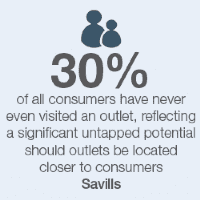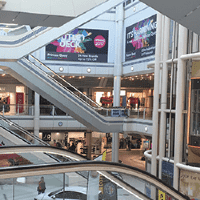There has been considerable activity in the outlet market of late. An average of one new scheme per year will be developed between 2013-2020, accounting for around two million sq ft of new retail and leisure space. To put this into context, during the same period shopping centres will have added 10 million sq ft to the UK market, which given the difference in scale of each sector represents a significant growth in outlet centres compared to the much larger shopping centre market.
Several of the largest schemes have recently undergone (or are undertaking) significant extensions and seven schemes will have transacted in 2016–17. Clearly, despite challenges from ecommerce and a booming Value sector, the outlet market remains a relevant and important asset class.
According to Geolytix there are 48 outlet malls in the UK. The top 15 Outlet schemes account for four million sq ft of retail and leisure space, with an average scheme size of 270,000 sq ft; the next 15 schemes have an average size of 150,000 sq ft. Annual footfall averages 4.12 million in the top 15 schemes.
The majority of the larger prime centres are now owned by large institutions/Propcos (eg Land Sec, THRE, Aviva, M&G etc), who tend to use specialist asset managers such as Realm and McArthur Glen who between them operate nearly 50% of the market.
.png)
.png)



.png)




.png)